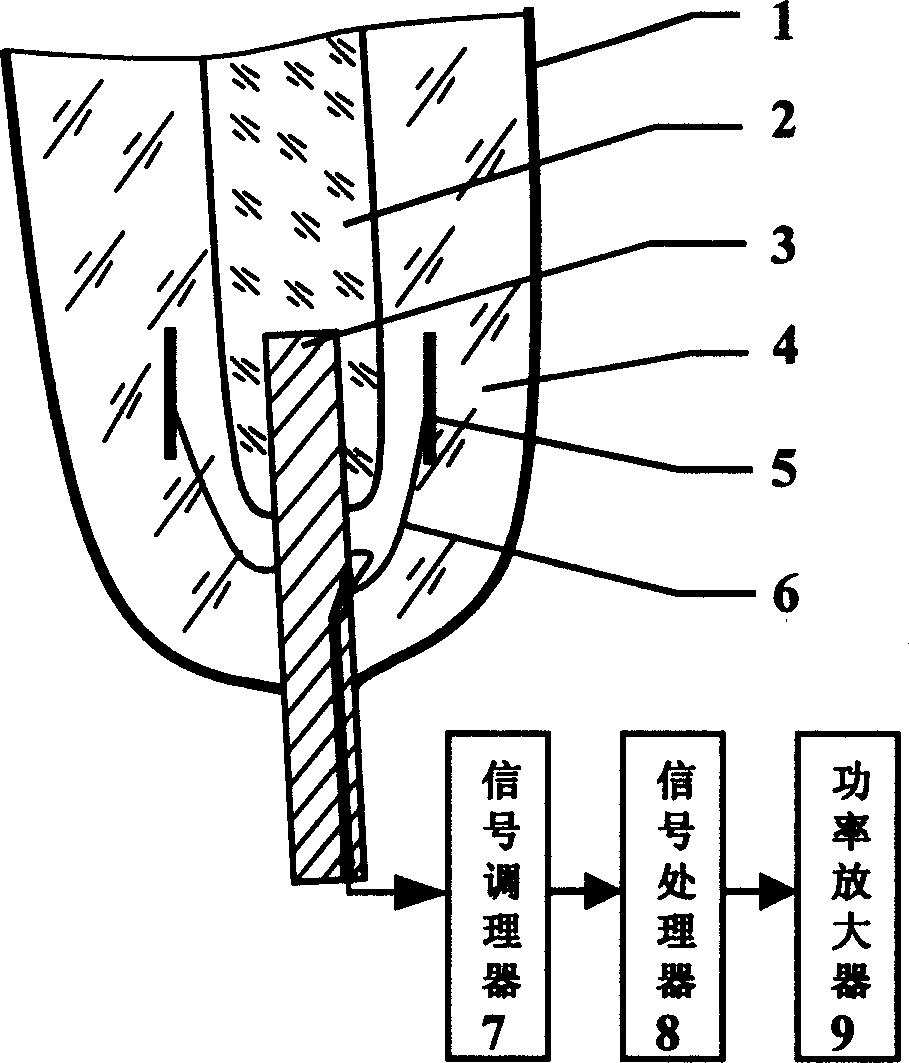Method for controlling bone implantation type artificial limb using internal bioelectricity signal
A bioelectrical signal, bone implantation technology, applied in the field of biomedical engineering, can solve the problems of poor air permeability, affecting the full manifestation of the advantages of bone implantable prostheses, and it is difficult to ensure the stable positioning of electrodes, and achieves simple circuit processing. , high reliability, less interference signal effect
- Summary
- Abstract
- Description
- Claims
- Application Information
AI Technical Summary
Problems solved by technology
Method used
Image
Examples
Embodiment Construction
[0011] The specific implementation manner of the present invention will be described below in conjunction with the accompanying drawings.
[0012] like figure 1 As shown, the method for controlling bone-implanted prostheses with in vivo bioelectrical signals of the present invention comprises the following steps:
[0013] 1) Insert the upper end of the implant 3 with holes into the remaining bone 2 of the amputee's residual limb 1, and the lower end protrudes out of the body to connect with the prosthesis;
[0014] 2) The electrodes 5 for detecting bioelectrical signals are surgically implanted into nerve bundles or muscle bundles in the soft tissue 4;
[0015] 3) Lead the lead wire 6 of the electrode to the signal conditioner 7 outside the body through the through hole on the implant body. After the lead wire of the electrode is drawn out, the hole on the implant body is sealed. Sealed with biocompatible material;
[0016] 4) The in vivo bioelectrical signal collected by t...
PUM
 Login to View More
Login to View More Abstract
Description
Claims
Application Information
 Login to View More
Login to View More - R&D
- Intellectual Property
- Life Sciences
- Materials
- Tech Scout
- Unparalleled Data Quality
- Higher Quality Content
- 60% Fewer Hallucinations
Browse by: Latest US Patents, China's latest patents, Technical Efficacy Thesaurus, Application Domain, Technology Topic, Popular Technical Reports.
© 2025 PatSnap. All rights reserved.Legal|Privacy policy|Modern Slavery Act Transparency Statement|Sitemap|About US| Contact US: help@patsnap.com

